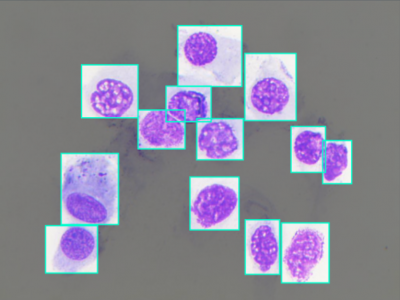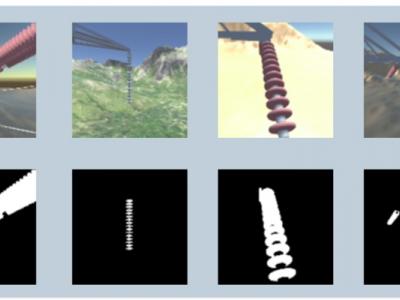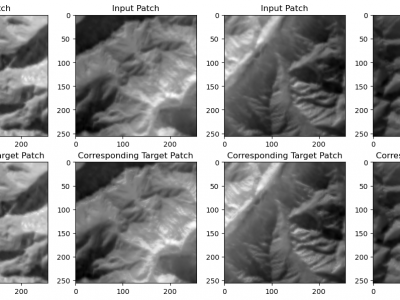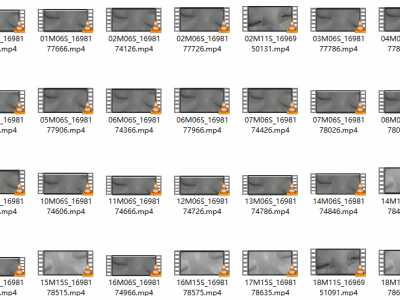Machine Learning

The JKU-ITS AVDM contains data from 17 participants performing different tasks with various levels of distraction.
The data collection was carried out in accordance with the relevant guidelines and regulations and informed consent was obtained from all participants.
The dataset was collected using the JKU-ITS research vehicle with automated capabilities under different illumination and weather conditions along a secure test route within the
- Categories:
 661 Views
661 Views
This is a compressed package containing nine multi-label text classification data sets, including AAPD, CitySearch, Heritage, Laptop, Ohsumed, RCV1, Restaurant, Reuters, and Sentihood.
- Categories:
 25 Views
25 ViewsNasal Cytology, or Rhinology, is the subfield of otolaryngology, focused on the microscope observation of samples of the nasal mucosa, aimed to recognize cells of different types, to spot and diagnose ongoing pathologies. Such methodology can claim good accuracy in diagnosing rhinitis and infections, being very cheap and accessible without any instrument more complex than a microscope, even optical ones.
- Categories:
 619 Views
619 ViewsThis database contains Synthetic High-Voltage Power Line Insulator Images.
There are two sets of images: one for image segmentation and another for image classification.
The first set contains images with different types of materials and landscapes, including the following landscape types: Mountains, Forest, Desert, City, Stream, Plantation. Each of the above-mentioned landscape types consists of 2,627 images per insulator type, which can be Ceramic, Polymeric or made of Glass, with a total of 47,286 distinct images.
- Categories:
 446 Views
446 ViewsTo address the challenges faced by patients with neurodegenerative disorders, Brain-Computer Interface (BCI) solutions are being developed. However, many current datasets lack inclusion of languages spoken by patients, such as Telugu, which is spoken by over 90 million people in India. To bridge this gap, we have created a dataset comprising Electroencephalograph (EEG) signal samples of commonly used Telugu words. Using the Open-BCI Cyton device, EEG samples were captured from volunteers as they pronounced these words.
- Categories:
 400 Views
400 ViewsThe Landsat 8 imagery, sourced from USGS Earth Explorer, covers diverse regions like the northeastern USA snow region, Brazilian forests, UAE deserts, and Indian zones (northern, central, and southern) from 2018 to 2023, capturing long-term trends and seasonal changes. The dataset, including bands B4, B5, and B10 with 30-meter resolution from LANDSAT/LC08/C02/T1\_TOA imagery, is crucial for accurate LST and emissivity prediction models. These bands capture vital land surface properties like vegetation health, moisture, and thermal characteristics, enhancing model reliability.
- Categories:
 5 Views
5 Views
In this work, we download the circRNA-drug sensitivity associations from the circRic database, in which the drug sensitivity data comes from the GDSC database, containing 80076 associations that involve 404 circRNAs and 250 drugs.
- Categories:
 2 Views
2 ViewsThis dataset encapsulates a comprehensive collection of eye movement recordings captured during sleep, exceeding 100 distinct episodes. The recordings are primarily categorized into Rapid Eye Movement (REM), Slow Eye Movement (SEM), and non-movement phases, providing a rich resource for sleep research. Each video is meticulously recorded in high-definition .mp4 format, ensuring clarity and precision in capturing subtle ocular dynamics.
- Categories:
 4 Views
4 ViewsPopularity of smartphones also popularized, reading content using smartphones. Reading using smartphones quite differs from reading using desktop system. Mouse and Keyboard are the peripherals associated with the reading in desktop systems. Study of the handling of such devices has led to provide implicit feedback of the content read. Similar study in smartphones to get implicit feedback remains to be a huge gap. Reading using smartphones involves screen gestures like pinch to zoom, tap, scroll, orientation change and screen capture.
- Categories:
 145 Views
145 Views
The dataset consists of 4-channeled EOG data recorded in two environments. First category of data were recorded from 21 poeple using driving simulator (1976 samples). The second category of data were recorded from 30 people in real-road conditions (390 samples).
All the signals were acquired with JINS MEME ES_R smart glasses equipped with 3-point EOG sensor. Sampling frequency is 200 Hz.
- Categories:
 147 Views
147 Views




